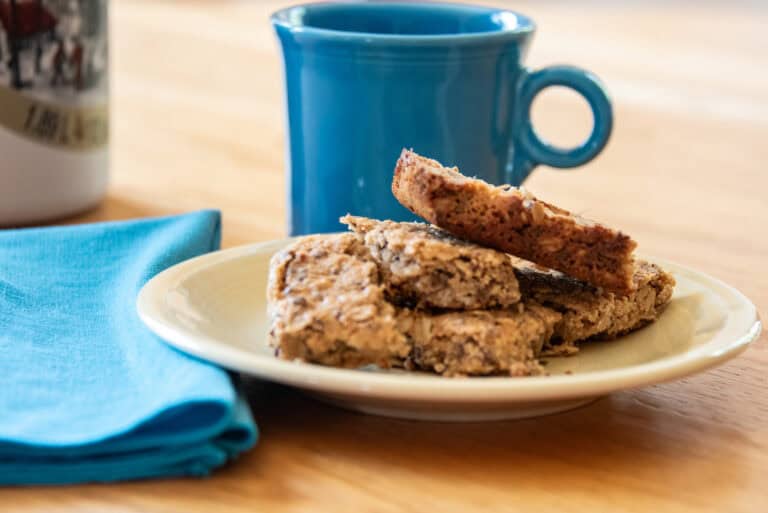Make Your Own Car First Aid Kit for Your Road Trip
Note: Advertising is how we keep this site free for you to enjoy, and we earn a commission from affiliate links that may be included in this post. Thank you for supporting Back Road Ramblers!
We don’t have any Boy Scouts in our family, but we try to travel with as much preparedness as we can stand, which means that we always have a road trip first aid kit stashed in the trunk of our car.
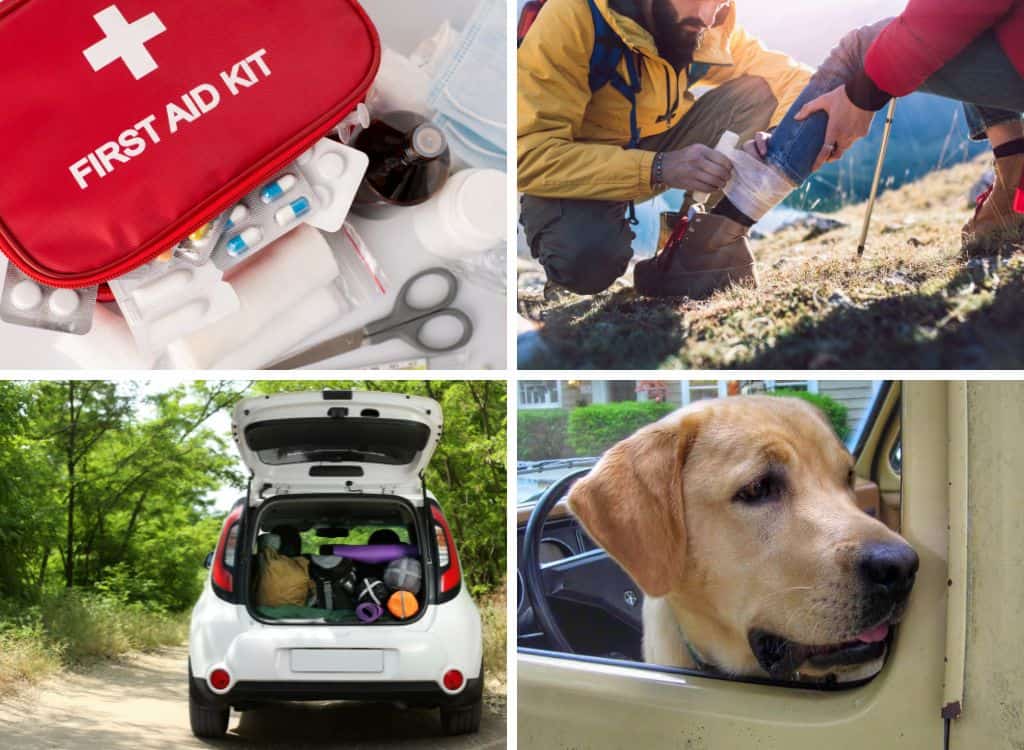
Even when we’re not traveling, we’ve used our car first aid kit for numerous small emergencies.
A first aid kit for travel is very easy to put together, and once you’ve gathered and packed your materials, you can pretty much forget about it until you need it. We go through our travel first aid kit twice a year to get rid of expired medicines and replenish our stores.
I created my first travel first aid kit just before our very first cross-country trip with our kids.
I hoped that we would never have to use it, but I put a lot of thought into what we might need in the way of remedies and emergency care, and now I keep a checklist folded up inside the kit so I can easily replenish stuff when things start to run low.
We have used our DIY first aid kit on numerous road trips, and it’s been so helpful for those minor emergencies that always seem to come up when we’re traveling.
Why You Should Create Your Own Road Trip First Aid Kit
Creating a DIY first aid kit makes more sense than buying one for many reasons.
Firstly, the first aid kits sold on Amazon often include the cheapest supplies available, along with things you’ll never use. We have spent more time cursing cheap bandaids and medical tape that doesn’t stick.
And those 299 pieces that are advertised in the product description? They’re mostly plastic bandages. We’re over it, and will never buy a ready-to-go first aid kit again.
While it’s initially more expensive to make your own travel first aid kit, the benefit is that you can ensure that you’ve included essentials that your family is likely to use. Because we spend so much time outdoors, our DIY car first aid kit is heavy on moleskin, blister prevention, and waterproof bandages.
We swear by a few herbal remedies that traditional first aid kits won’t include, and we also add some of our favorite essential oils, as well as a few items for our dogs.
Your custom first aid kit may include many things I’ve never even thought of, which is why it’s important to create your own.

Your DIY Car First Aid Kit Container
To create a decent DIY car first aid kit, you first need to find the right container. Ours was secured at a local discount store for a few bucks, and at 14″x 8″x 6″, it is much bigger than a standard first aid kit. That’s because we keep all the first aid stuff for traveling inside — not just emergency stuff, but also antacid tablets, vitamins, and bug spray.
Everyone in the family knows where our first aid kit lives in the car, and it gets accessed almost every day.
Choose a sturdy plastic container with a tight-fitting lid. That way, if something spills, it’s contained inside the first aid kit, and if someone leaves it out in the rain, it won’t get ruined.
We’ve also used a fishing tackle box for our first aid kit. We loved keeping things organized, but it was hard to clean.
What to Include in Your Car First Aid Kit
Now that you’ve got your container to hold all your first aid kit supplies, it’s time to make a list and stock up on necessities.
When you create a first aid kit from scratch, you will have to make an initial investment, but after that, you can simply stock up on stuff when you run out or when it expires.
Here’s an overview of everything we’ve included in our car first aid kit. Use it as a jumping-off point, but be sure to create a list of your own, as your medical needs might be slightly different than ours.
Car First Aid Kit Essentials for Wound Care

Wounds are probably our most common injury while traveling, and for the most part, we’re dealing with cuts, scrapes, blisters, splinters, and bug bites. Here’s what we keep for wound care in our car first aid kit:
- Bandages of all shapes and sizes. Our favorite brand is Nexcare waterproof bandages because they are super durable and don’t come off until you take them off.
- Butterfly closures – waterproof. Great for clean cuts or when you need to secure two pieces of skin together so that it heals nicely.
- Sterile gauze pads – different sizes
- Alcohol wipes
- First aid tape – waterproof. We like fabric tape better than paper tape.
- 2nd Skin blister pads. If you already have a blister or hot spot, I recommend 2nd Skin to prevent added damage to the area.
- RockTape. More blister treatment. Because I always get heel blisters, I use RockTape before any hike with a significant incline.
- Antibiotic cream – for treating clean cuts and scrapes before bandaging.
- Tweezers, needles, and a magnifying glass for splinters/tick removal.
- Caladryl lotion for bug bites.
- Cortizone for bug bites and poison ivy, etc.
- New-Skin liquid bandage. For times when stitches would be a good idea but you’re too far from urgent care, New-Skin is the next best thing. Make sure the wound is clean before using.
First Aid Kit Essentials for Sprains and Strains, Aches and Pains
We do a lot of hiking and use the following first aid items a lot. When heading out on hikes, we pack a ziplock baggie with essentials from our main car first aid kit.
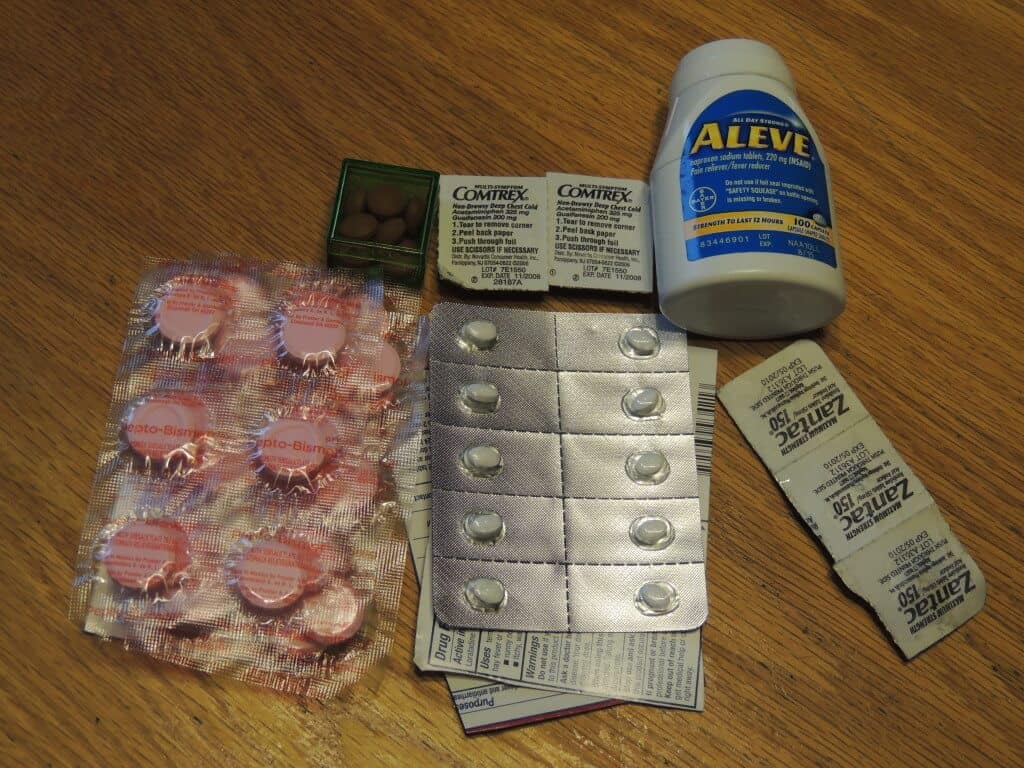
- Arnica cream – for bruises and muscle pain. Our new favorite is Joshua Tree After Sport Recovery Lotion, which we use after big hikes.
- WellPatch pain-relieving pads – for aching muscles
- Instant cold pack for sprains or inflammation
- Ace bandages – provide extra support for strains and sprains
- Splinting material
Medications for Your Road Trip First Aid Kit
Colds, upset stomachs, allergies, and menstrual cramps all happen on the road. Here’s how we prepare:
- Tylenol – for headaches, muscle aches, menstrual cramps, etc.
- Ibuprofen – for aches and pains. Ibuprofen is faster acting, but Tylenol is stronger.
- Asprin – for emergency use (heart attack/stroke)
- Pepto Bismal tablets – To counteract the effects of bad camp food or other stomach issues.
- Antihistamine – for allergies and reactions to bug bites. We use this for dogs too – 1 mg per pound of your dog’s weight.
- Prescription-strength burn cream – You may be able to use aloe vera gel or something similar, but everyone in our family has fair skin, and we blister easily, so we head straight to the hard stuff.
- Tums
- Cold and Flu medication (over the counter)
- Cough Drops
- Prescription medicines will vary depending on the trip
- Saline eye drops
Herbal Remedies for Your Car First Aid Kit
We use a few herbal remedies when traveling, primarily for minor ailments and general well-being.
- Garlic/mullein ear oil. One of us is prone to ear infections, and this has been a lifesaver in the past. We make ours, but garlic and mullein ear drops are also available on Amazon.
- Chaga tincture. I can’t say enough good things about Chaga. It is a fungus that grows in the north woods on birch trees. It is anti-inflammatory, anti-oxidant, anti-hyperglycemic, and good for general health and vitality. Read more about Chaga in this article from Mother Earth News. You can buy commercially prepared chaga, but I don’t know enough about the brands to recommend one.
- Dandelion tincture -homemade- for indigestion. You can also buy dandelion tincture.
- Crystallized ginger – for motion sickness.
- Aloe vera – for mild sunburns.
- Lemon essential oil – for general mental fatigue. We use it in a diffuser that plugs into the car.
- Lavender essential oil – for insomnia and headaches. We rub it into our temples for instant relief.
- Witch hazel – as an antiseptic and facial toner.
- Bach rescue remedy – for anxiety, insomnia, and tension.
DIY Car First Aid Kit Extras
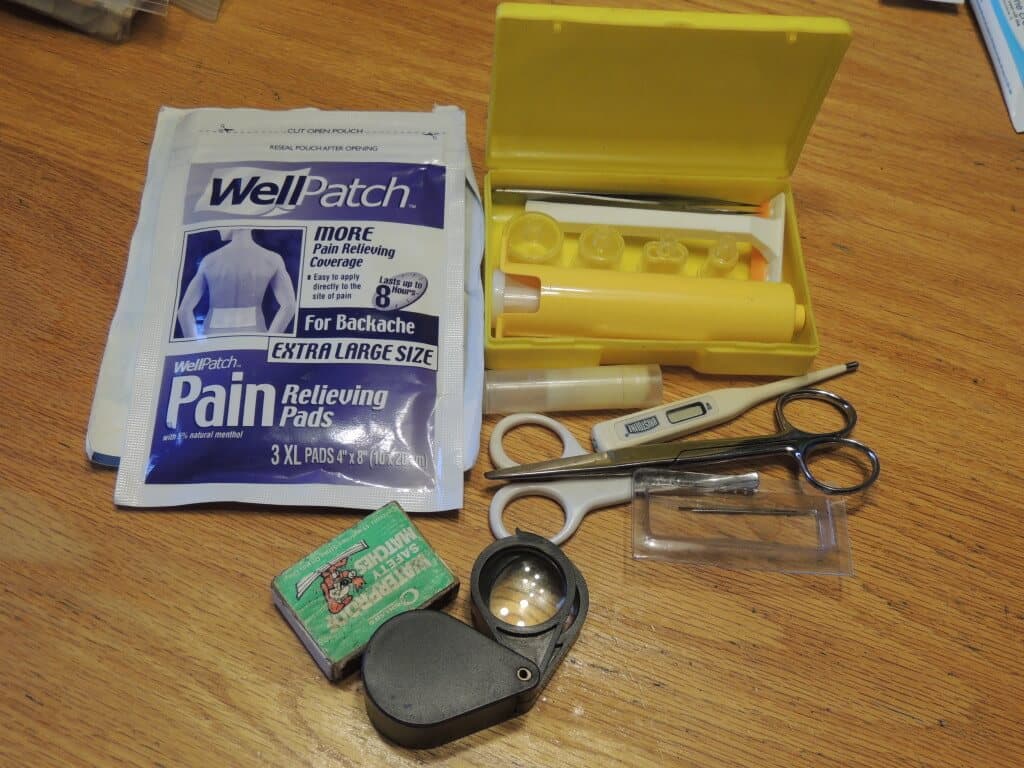
Because you never know when this stuff will come in handy when you’re traveling:
- Small scissors
- Digital thermometer
- Lip balm with SPF
- Lighter and matches
- Cotton balls, cotton swabs, and cotton cloths
- Plastic sealable bags
- Hand sanitizer
- Face masks
- Latex gloves
- Small first aid guide
- Needle/thread
- Emergency blanket
First Aid Kit Extras for Traveling with Dogs
We keep our dog’s first-aid stuff in with our regular first-aid kit. As far as wound care goes, we can use much of the same stuff for our dogs that we use for us. Here’s what we add to our road trip first aid kit when traveling with dogs.
- Emergency veterinarian phone numbers, including poison control
- Hydrogen peroxide – To induce vomiting, but only when directed by a veterinarian.
- Rectal thermometer – Your dog’s normal body temperature is between 101°F and 103°F.
- Benadryl – Good for bites, stings, and allergic reactions. Here is the standard dosage information for giving Benadryl to dogs.
- Vet Wrap – This is a self-adhesive tape that is used for all kinds of cuts, scrapes, and other wounds.
- Prescription pain medication. Ask your vet for an emergency supply of Rimadyl or whatever else they recommend.
Printable First-Aid Kit Checklist
Click on the photo to access the printable PDF version of the checklist.
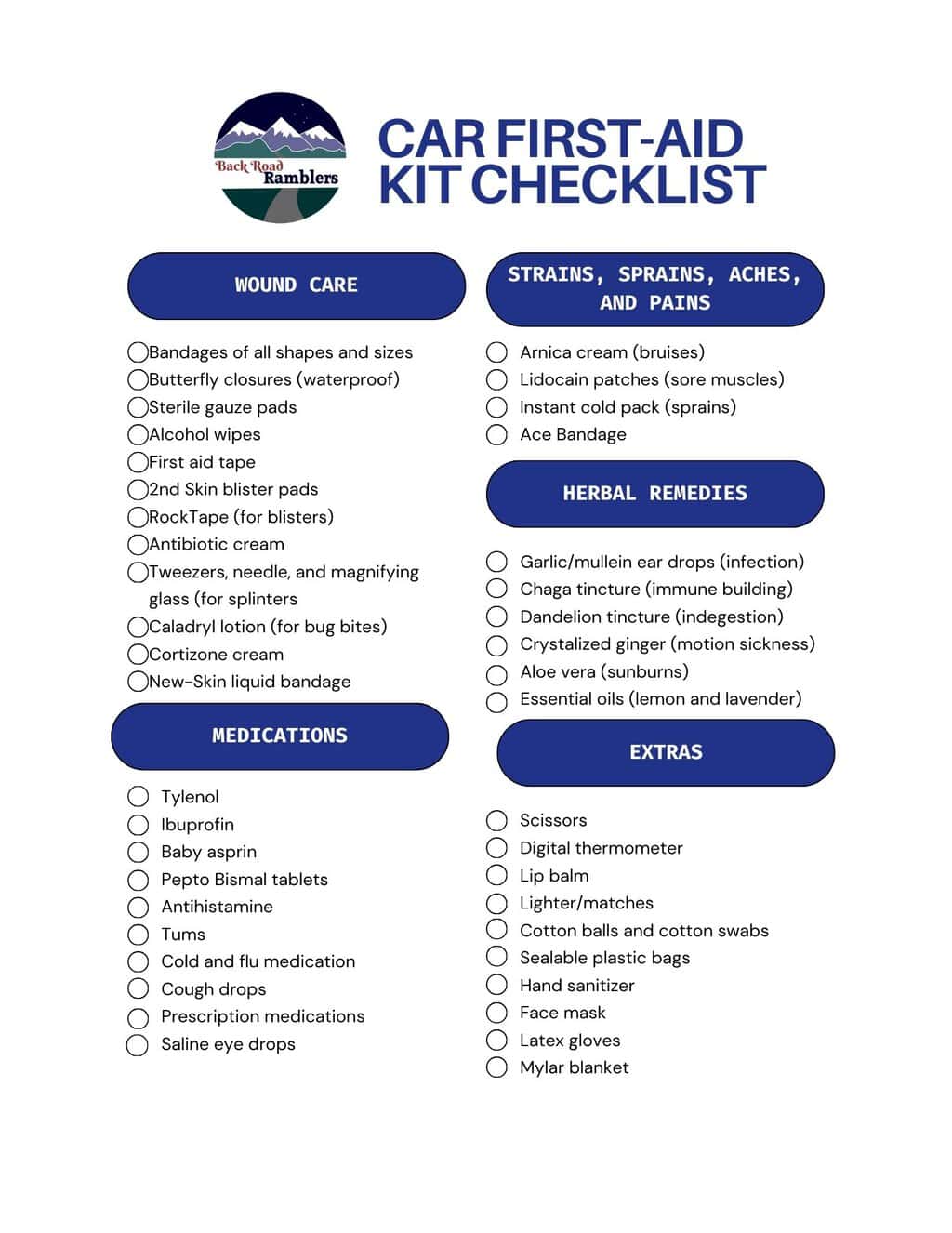
Making Sure You’re Prepared for Emergencies
Our DIY road trip first aid kit gets replenished before big trips or once a season. We keep it in the car at all times, but in the winter, we go through and take out all the liquids so that they don’t freeze.
I highly recommend getting some first-aid training, and wilderness first-aid training if you hike a lot.
All the first aid equipment in the world will be useless if you have an emergency and don’t know what to do!
Planning your next big road trip? Here are the posts we’d recommend reading next!
- Plan Your Cross-Country Road Trip on a Budget
- The Best Apps to Download Before a Camping Road Trip
- Planning a Picnic for Your Next Road Trip
- Road Trip Packing Hacks: Fitting Everything into a Small Car
Follow us on social media for more road trip inspiration
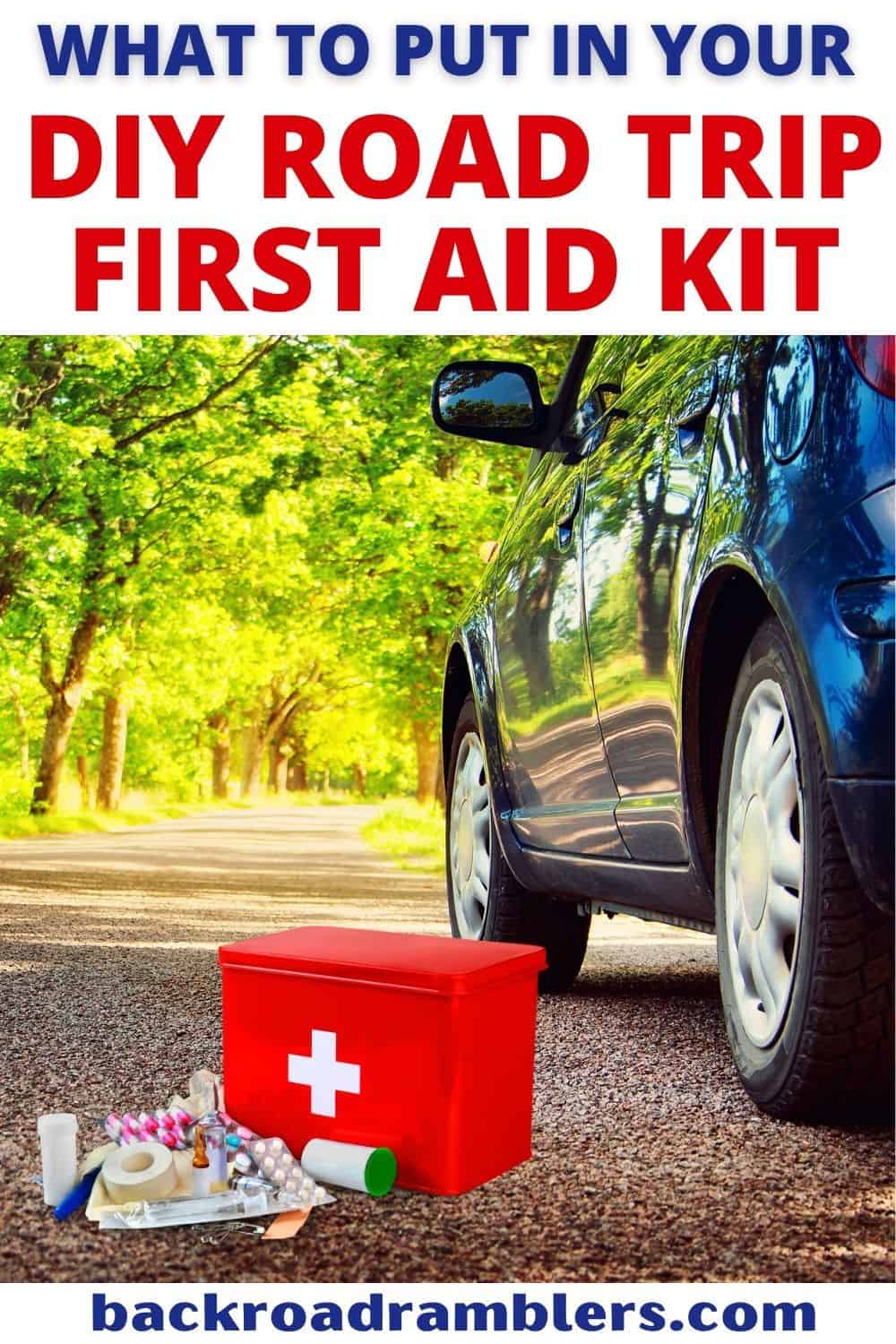
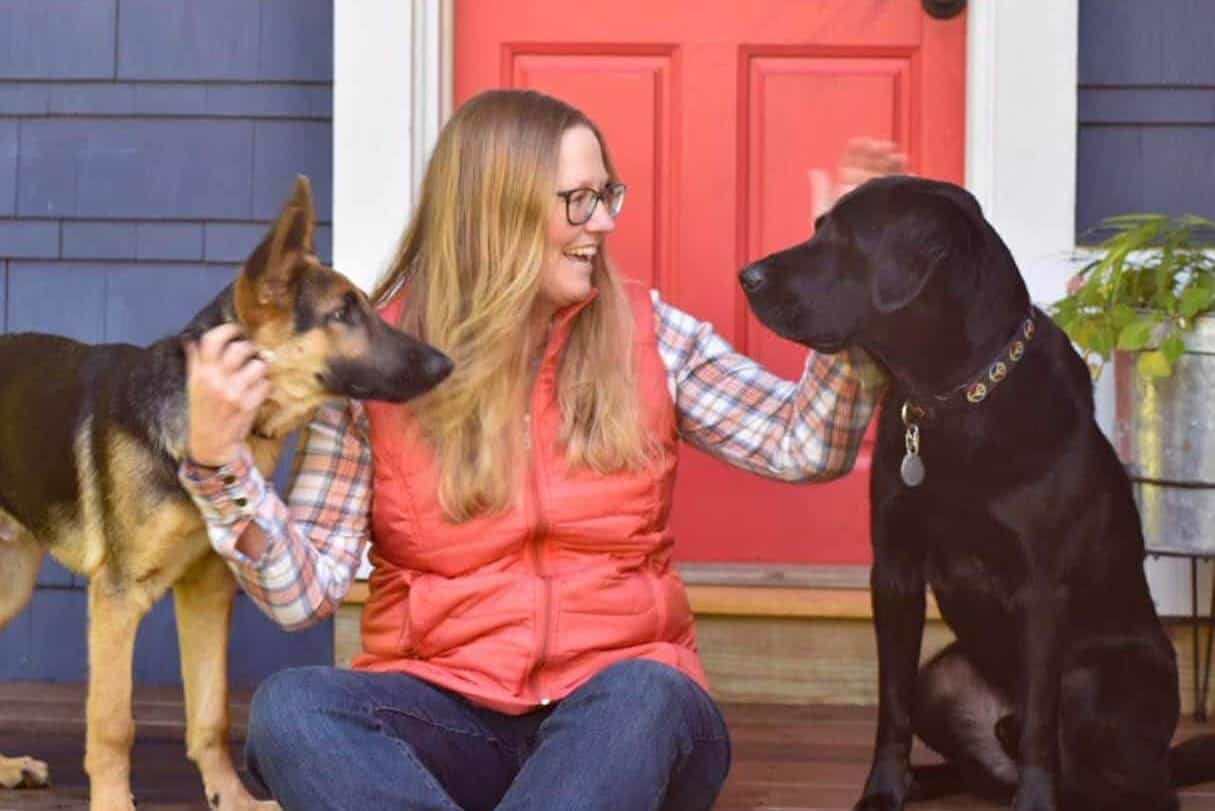
Tara Schatz is a freelance writer and travel blogger with a passion for outdoor adventures. She is the co-author of AMC’s Best Day Hikes in Vermont and currently blogs at Back Road Ramblers and Vermont Explored, where she shares travel tips, adventure destinations, and vacation ideas for the wanderer in everyone.

